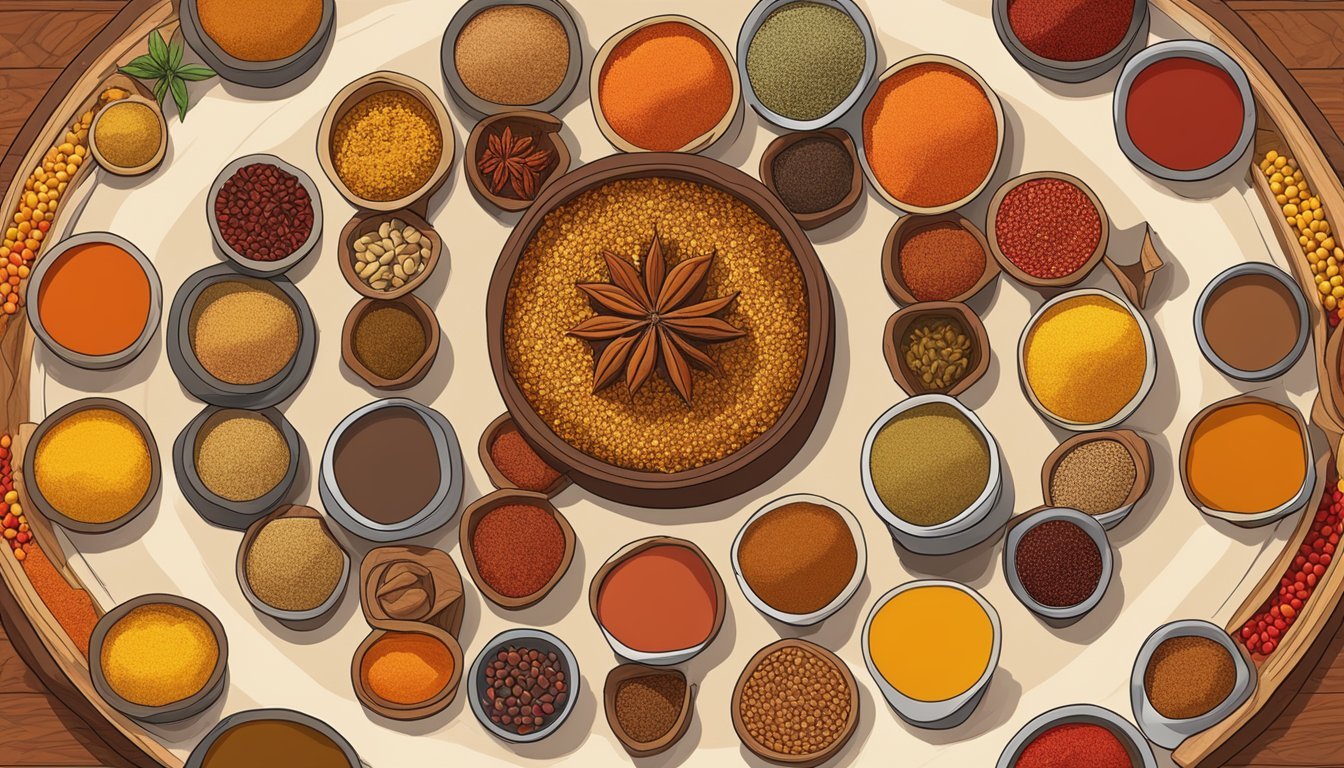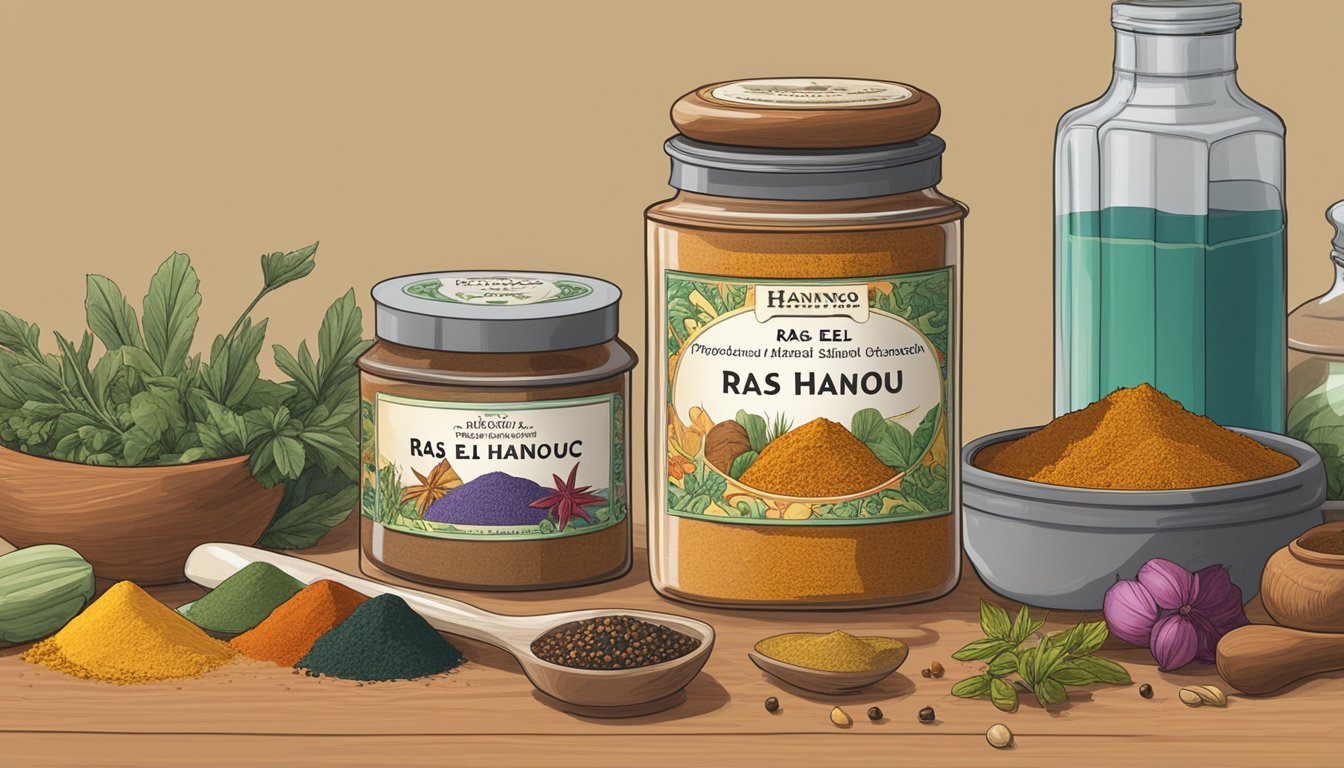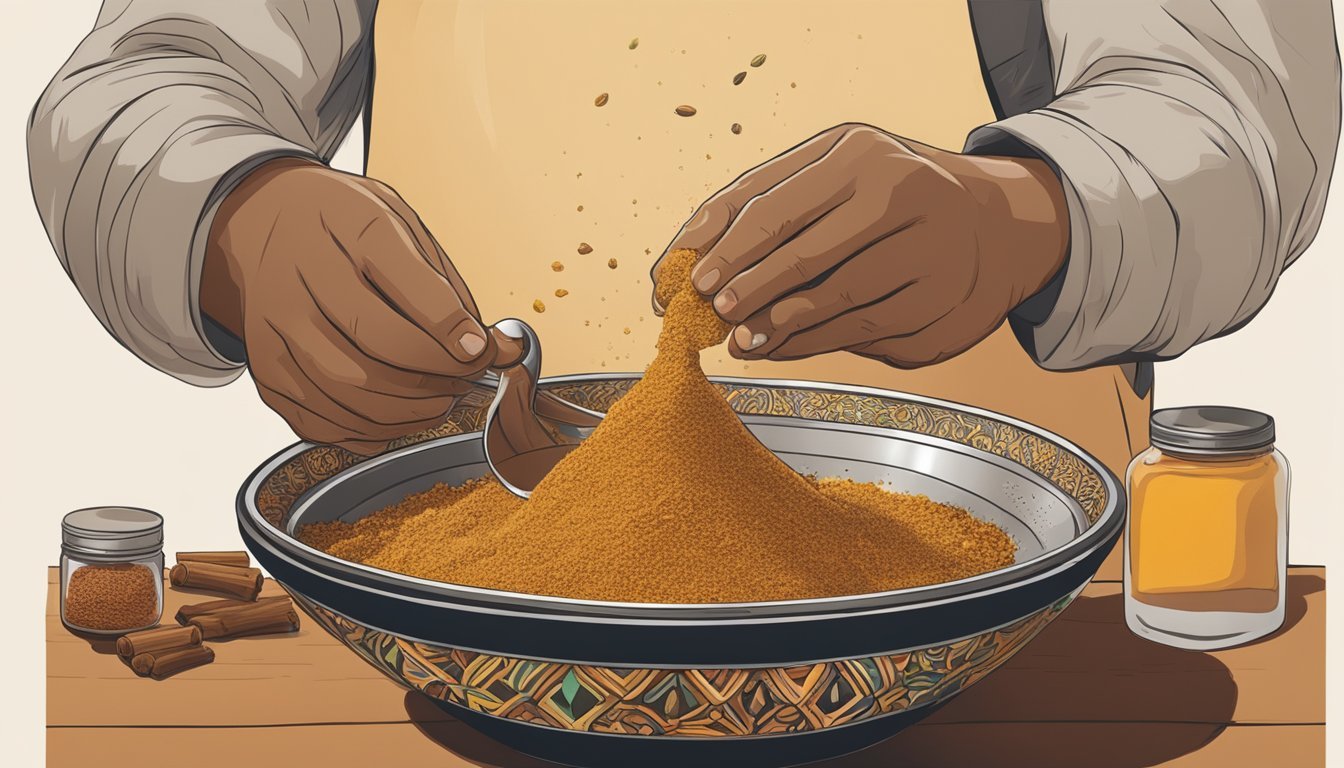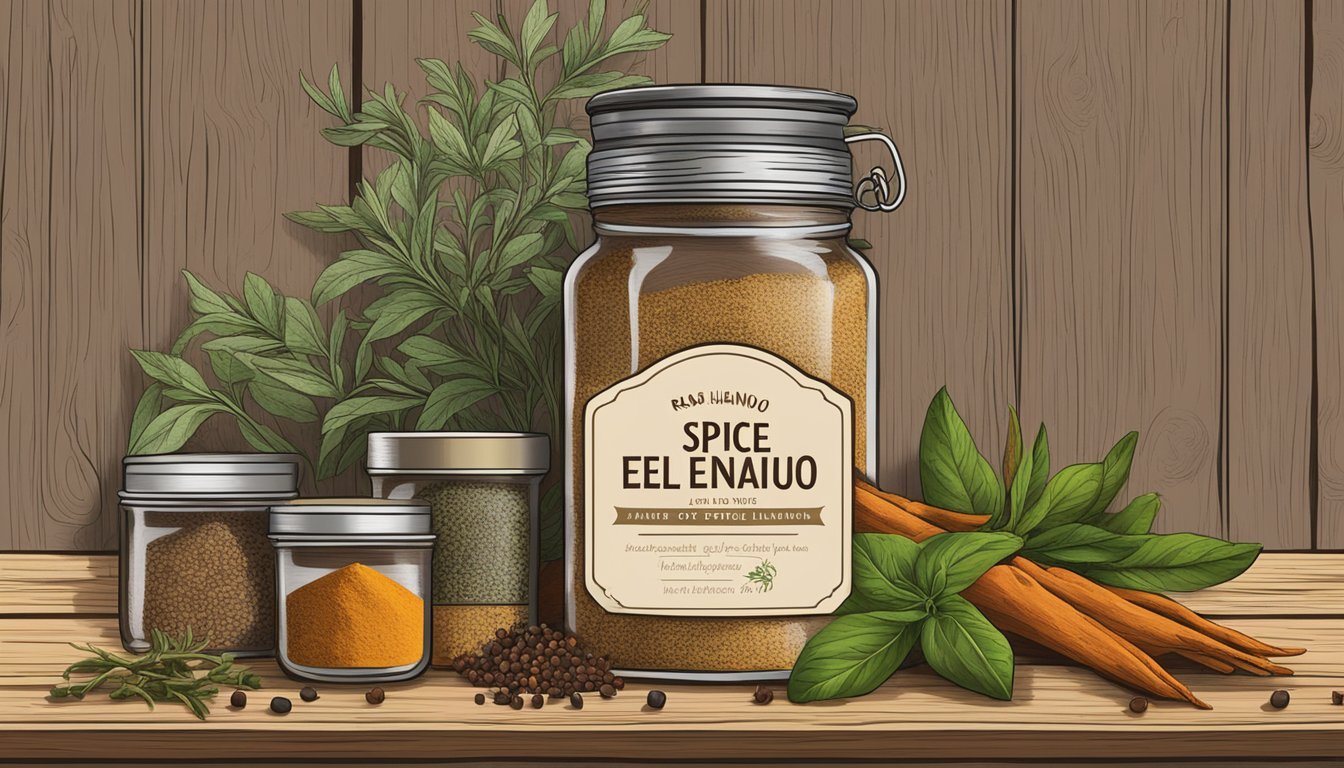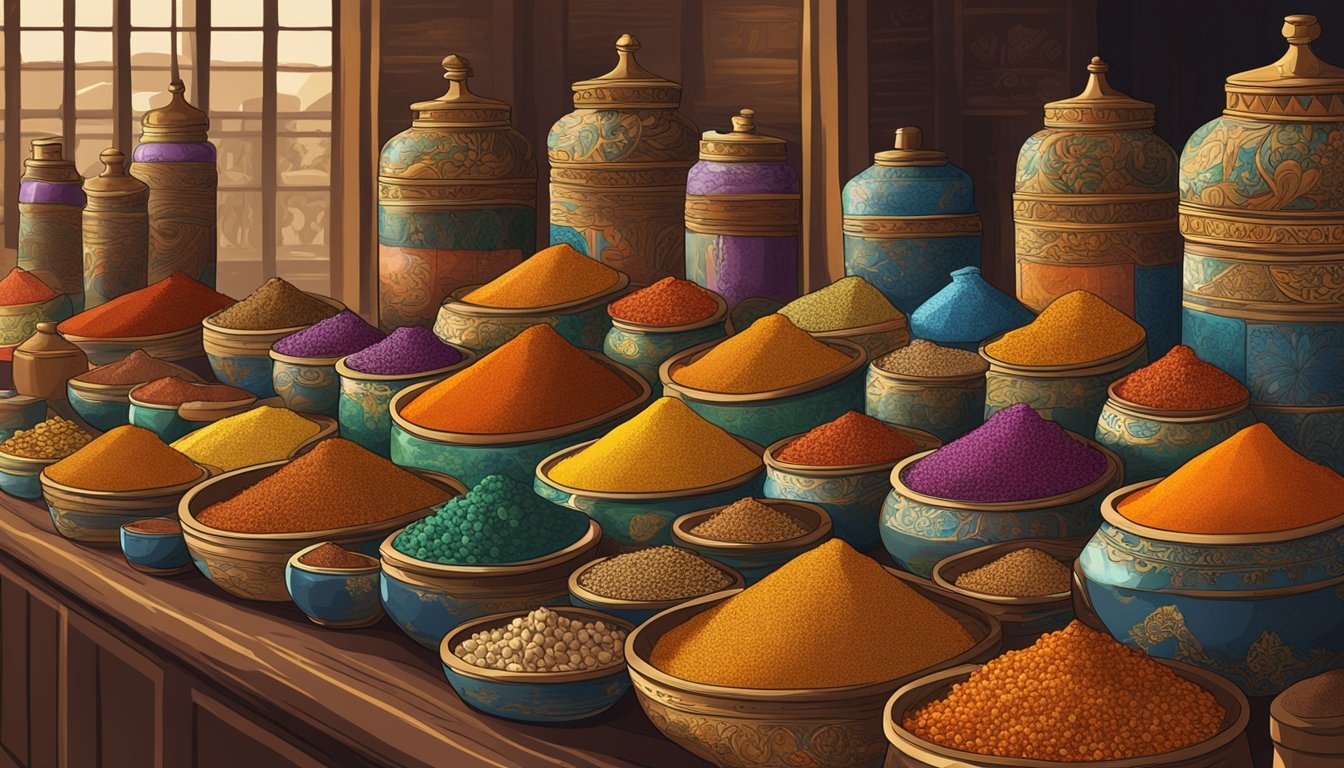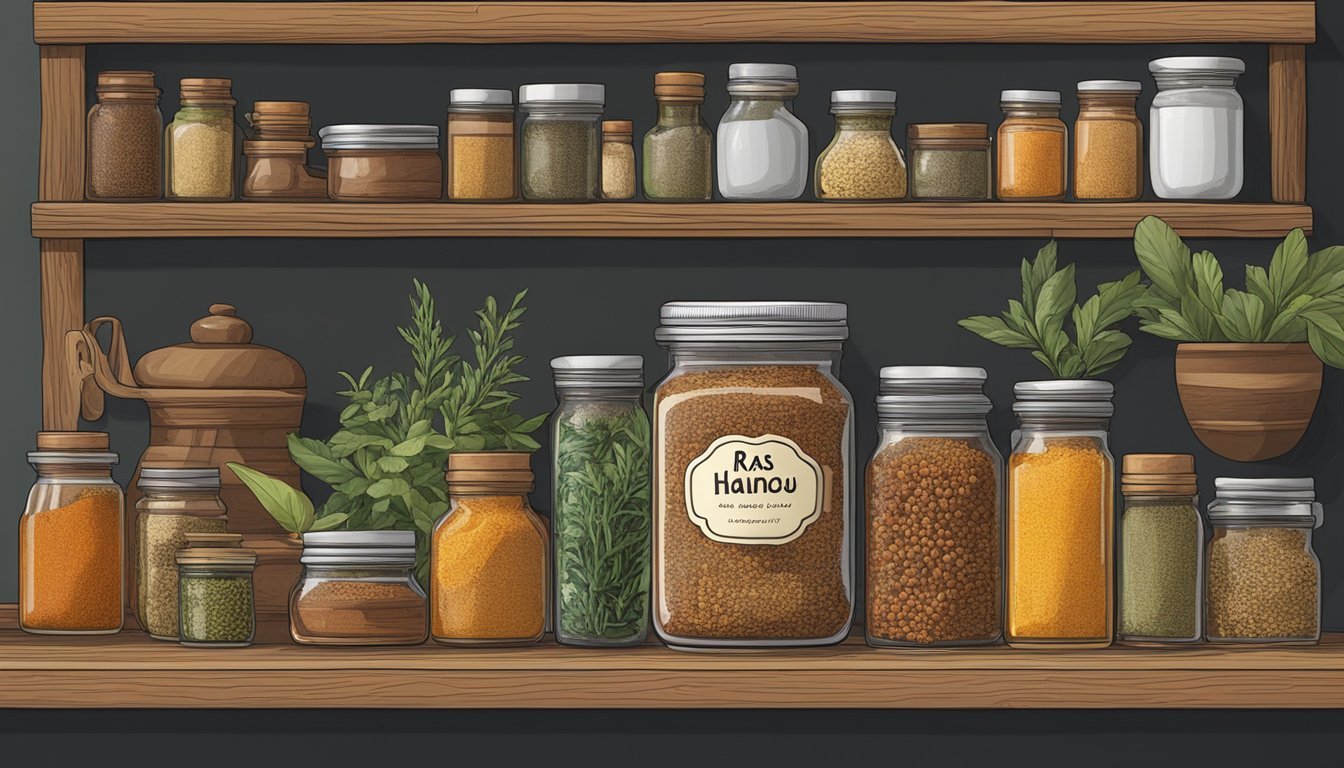How Long Does Ras el Hanout Last?
Understanding Spice Shelf Life
Ras el hanout is a vibrant and complex North African spice blend prized for its ability to elevate the flavors of a dish. This intricate mixture can include up to forty different spices, such as anise, rosebuds, cumin, and ginger. Combining such a variety underscores its reputation as the pinnacle of spice blends within Moroccan and other North African cuisines.
The shelf life of ras el hanout, like any spice blend, is finite. Freshness is pivotal to maintaining its rich and nuanced flavors. When stored properly in an airtight container away from heat and light, a homemade batch of ras el hanout can retain its peak quality for approximately 4-6 weeks. As time progresses, the spices gradually lose their potency, leading to a more subdued taste profile.
Preservation of the spice's quality hinges on the conditions of storage. Purchased pre-made ras el hanout may come with a best-by date, which can serve as a rough guideline for its optimal culinary use. However, a discerning palate will be the true judge of when a blend has passed its prime, often signaled by a noticeable decline in aroma and flavor.
Origins of Ras El Hanout
Ras El Hanout is a cornerstone of North African and particularly Moroccan cuisine, reflecting a rich history of spice trade and cultural exchange.
Historical Significance
Ras El Hanout, which translates from Arabic to "head of the shop," traces its origins to the spice trade era when North Africa was a pivotal region connecting the East and West. Merchants would blend the finest spices available to create a signature mix that represented the peak of their inventory. The blend is not just a culinary essential but also a cultural artifact, symbolizing the historical importance of North Africa's markets in global spice trade.
Regional Variations
Moroccan Spice Blend: While it is widely used across North Africa, the ingredients of Ras El Hanout can vary significantly from Tunisia, through Algeria, to Morocco, reflecting local taste preferences and availability of spices.
Tunisia: The Tunisian variant may lean towards a more piquant profile.
Algeria: Algerian Ras El Hanout often finds a balance between sweet and savory notes.
Morocco: Moroccan versions typically combine a broad array of spices, from the common like cumin and coriander, to the exotic such as dried rose petals, creating a unique and complex flavor profile.
Each region's blend holds its own identity, shaped by the cultural and culinary practices of the people who create it.
Composition of Ras El Hanout
Ras El Hanout is a complex, aromatic spice blend integral to Moroccan cuisine, celebrated for its intricate balance and variety of flavors.
Common Ingredients
The core components of Ras El Hanout often include:
Cumin: Adds a warm, earthy note.
Coriander Seeds: Impart a citrusy, slightly sweet flavor.
Turmeric: Contributes a bright yellow hue and a peppery taste.
Ginger: Offers a spicy, sharp taste.
Cardamom: Known for its intense, sweet aroma.
Nutmeg: Provides a warm, nutty essence.
Black Pepper: Delivers a sharp, pungent flavor.
Cinnamon: Gives a sweet, woody flavor.
Paprika: Adds sweetness and color, with some varieties lending a smoky taste.
Cloves: Possess a strong, sweet, almost medicinal flavor.
Allspice: Resembles a combination of clove, cinnamon, and nutmeg.
These spices form the backbone of Ras El Hanout, creating a multi-layered profile that can turn any dish into a tapestry of flavor.
Variations in Blends
Individual Ras El Hanout blends may vary, with additional spices included based on regional or personal preferences. Here are some potential variations:
Mace: Similar to nutmeg but more delicate, often used for its lighter touch.
Saffron: One of the most luxurious spices, imparts a distinct aroma and golden coloring.
Whole Spices: Many chefs prefer to start with whole spices, toasting and grinding them for heightened flavor.
No single recipe for Ras El Hanout is definitive; spice merchants and cooks may have their own secret blends, adding to the mystique of this celebrated spice mix.
Culinary Uses
Ras el hanout, with its array of spices including rosebuds, offers a complex flavor profile to a variety of dishes. It serves as a versatile seasoning that enhances meats, vegetables, and grains with a warm, spicy depth.
Traditional Dishes
Traditional North African cuisine widely incorporates Ras el hanout in its recipes. Meat dishes, particularly lamb and chicken, are often seasoned with this spice blend to create rich flavors. One of the hallmark dishes using Ras el hanout is a tagine, a Moroccan stew that is slow-cooked to tender perfection. The spice blend is also a staple in couscous (What wine goes well with couscous?) preparations, where it infuses the grain with aromatic warmth.
Tagines (Lamb/Chicken)
Couscous
Rice and grain dishes
Soups and stews
Modern Adaptations
Chefs and home cooks around the world have adopted Ras el hanout to bring Moroccan flair to modern cuisine. This spice blend is now used to season vegetables for roasting, providing an alternative to the traditional salt and pepper. In meat dishes, it's applied as a dry rub or included in marinades to impart a deep flavor profile that compliments both the flavor and texture of the meat.
Roasted Vegetables (What wine goes well with roasted vegetables?) (e.g., carrots, potatoes)
Seasoned Rice Dishes
Enhanced Flavor for Soups and Stews
Meat Marinades (Lamb/Chicken)
Storage and Shelf Life
Ras el Hanout, when stored correctly, retains its quality for an extended period. The key to maximizing its shelf life lies in the storage method and understanding the factors that affect its freshness.
Proper Storage Methods
The optimal storage for Ras el Hanout is an airtight container to prevent moisture and air from degrading the spice mix. Glass is the preferred material for such containers as it does not transfer any odors and keeps the spices in a non-reactive environment.
Location: Store the airtight container in a cool, dark place, away from direct sunlight which can cause the spices to lose their potency.
Material: A glass container is ideal for storing the spice mix to preserve its aromatic qualities.
Factors Affecting Freshness
Several factors influence the freshness of Ras el Hanout, including:
Air Exposure: The less air exposure, the slower the oxidation process, which preserves the flavor and aroma.
Moisture: Any moisture can cause the spices to become moldy or lose their robust flavor.
Age of Spices: Fresher spices, particularly whole rather than ground, tend to have a longer shelf life due to their intact essential oils.
By keeping these factors in check, one ensures the spice mix maintains its characteristically rich and complex profile for as long as possible. Typically, Ras el Hanout can last between 3 to 6 months with proper storage, and up to 3 years if the spices are whole and conditions are ideal.
Preparing Ras El Hanout
Crafting Ras El Hanout at home provides a fresher flavor and allows for personalization of this complex Moroccan spice blend. A proper mix involves a balance of sweet, spicy, earthy, and aromatic notes.
DIY Spice Blend
To make Ras El Hanout from scratch, one requires a variety of spices. Coriander seed and peppercorns lay the foundational warm and pungent notes. A touch of sweetness can be achieved with anise seeds, whereas fenugreek introduces a hint of bitterness to the ensemble.
The basic ingredients often include:
Coriander seeds
Peppercorns
Fenugreek seeds
Anise seeds
Optional additions for complexity might be:
Ground turmeric
Ginger
Cinnamon
Allspice
Tools such as a mortar and pestle are traditional for grinding spices but a modern electric grinder can also suffice.
Combine the whole spices in the mortar (or grinder).
Grind to a fine powder consistency.
Strain through a fine mesh to ensure even texture.
Store in an airtight container away from light and heat.
Usage Tips
Using Ras El Hanout is straightforward, but one should consider the potency of the homemade blend. Because of its freshly ground nature, it tends to be more fragrant and flavorful compared to the store-bought versions.
Introduce the blend early in the cooking process to allow the flavors to meld within the dish.
Use sparingly, as the blend is concentrated; one can always add more according to taste.
For those who like customization, spices like chufa, commonly known as tiger nuts, can be ground and added for extra texture and sweetness. Experimentation in small batches can lead to a signature mix that caters to one's personal palate.
Substitutes for Ras El Hanout
When Ras el Hanout is unavailable, a cook can still achieve a similarly complex and aromatic flavor profile by using alternative spice blends or creating a custom mix tailored to the dish being prepared.
Alternative Spice Blends
Baharat: This Middle Eastern blend shares several ingredients with Ras el Hanout, including black pepper, paprika, coriander, nutmeg, cardamom, cloves, cumin, and cinnamon. It can serve as a direct replacement to impart warmth and depth to dishes.
Garam Masala: Hailing from Indian cuisine, garam masala offers a different but equally rich combination of spices. Use in moderation as a substitute for Ras el Hanout to introduce warming notes, though the flavor profile will shift slightly.
Curry Powder: While not identical, curry powder can be used in a pinch. It contains some similar elements such as coriander, cumin, and turmeric, providing an earthy and aromatic character to recipes.
Creating a Substitute Mix
Individuals can craft their own blend to mimic Ras el Hanout's character. Below is a suggested combination, with quantities that can be adjusted to taste:
1 part cumin
1/2 part coriander
1/2 part ginger powder (how long does ginger powder last?)
1/2 part paprika (or cayenne for heat)
This homemade mix offers an earthy base with a hint of warmth and is best used in equivalent amounts to Ras el Hanout called for in a recipe.
Health Considerations
When considering the health implications of Ras el Hanout, it is critical to focus on its nutritional makeup and the potential health benefits derived from its diverse range of spices.
Nutritional Information
Ras el Hanout is a melange of spices and does not contain significant amounts of sugar or salt unless these are added during the blending process. Typically, it is the combination of spices that gives Ras el Hanout its character rather than sugar or salt content.
Potential Benefits
Spices within Ras el Hanout, such as coriander, cinnamon, and cardamom, are known for their health properties. Coriander may offer dietary fiber, while cinnamon and cardamom can provide vitamin A, niacin, and thiamin. Each spice holds a unique nutritional profile that contributes to the overall potential benefits of the Ras el Hanout blend.
Buying Guide
When it comes to purchasing Ras el hanout, understanding the factors that contribute to its longevity and quality will ensure the best culinary experience.
Selecting Quality Spice Blends
Individuals should look for freshness indicators such as a vibrant color and strong aroma, as these suggest the spices have been recently ground. A superior Ras el hanout blend commonly includes a variety of ingredients like cinnamon, cumin, coriander, allspice, black pepper, and ginger, each contributing to a complex flavor profile without any single spice overwhelming the others.
Where to Purchase
Specialty stores are known for offering high-quality, authentic spice blends and may provide the freshest options. For convenience, platforms like Amazon and The Spice House offer a wide selection, and they often include customer reviews that can help gauge the freshness and quality of the product. Potential buyers should seek vendors with high turnover to increase the likelihood of purchasing a fresher product.
Cultural Significance
The cultural significance of Ras el Hanout lies in its deep-rooted connection to North African cuisine and its burgeoning influence on global culinary practices.
Ras El Hanout in North African Cuisine
In North African countries, particularly Morocco, Algeria, and Tunisia, Ras el Hanout is not just a spice blend but a cornerstone of regional cooking. It plays an essential role in traditional Moroccan dishes such as tagine—a slow-cooked stew often featuring meats and vegetables—and couscous, where it imparts a warm, complex flavor profile. Tunisian and Algerian cuisines also incorporate the spice blend, though each region has its unique version, reflecting the local spice availability and culinary preferences.
Global Influence
Beyond its birthplace in North Africa, Ras el Hanout has made a notable impact on the global culinary scene. It is utilized by chefs worldwide who seek to introduce their patrons to the distinctive flavors of Moroccan and Middle Eastern cuisines. Not confined to its traditional applications, the spice blend is now found in innovative dishes that amalgamate elements from various food traditions, including Indian cuisine, where its complexity complements the region's own richly spiced dishes. Ras el Hanout's aromatic qualities continue to inspire new culinary creations, establishing it as a versatile and sought-after ingredient in kitchens around the world.
Pairing with Foods
Ras el hanout's complex flavor profile makes it versatile for various food pairings. It enhances the taste of meats and vegetables and imparts a warm, aromatic character to grains and legumes.
Meat and Vegetable Pairings
For meat, Ras el hanout is particularly suitable for preparing flavorful meatballs and can be used as a dry rub for roasted or grilled meats. It pairs beautifully with:
Lamb chops (What wine goes well with lamb chops?): Ras el hanout adds a rich, deep flavor when used as a seasoning.
Chicken: The spice blend complements the mild nature of chicken, whether it's grilled, roasted, or sautéed.
For vegetables, this spice blend brings a Moroccan twist to simple side dishes. It works well with:
Roasted vegetables: Toss mixed vegetables like carrots, zucchini, or sweet potatoes with Ras el hanout before roasting.
Bell peppers and onions: These vegetables when sautéed with the spice blend become a tasty accompaniment.
Grains and Legumes
Ras el hanout elevates the flavors of both grains and legumes:
Couscous: Stir a teaspoon of the spice blend into the couscous as it cooks to infuse it with the flavors of North Africa.
Rice: Mixing Ras el hanout into rice dishes adds complexity and warmth.
Legumes such as chickpeas can be mixed with the spice and roasted or added to stews. They absorb the rich flavors, making a simple legume dish come alive.
Incorporate a dollop of yogurt as a condiment with grains or legumes seasoned with Ras el hanout to add a creamy texture and cool, tangy contrast to the warm spices.
Enhancing Flavors
Ras el hanout is renowned for its ability to elevate culinary creations through its complex bouquet of fragrant spices. Chefs and home cooks alike incorporate this blend to achieve authentic and deeply aromatic flavor profiles characteristic of North African cuisine.
Advanced Cooking Techniques
In advanced cooking, precision in spice use distinguishes good dishes from great ones. Ras el hanout offers a symphony of flavors, ranging from floral to woody notes, that can transform a dish with subtlety or pronounced depth. Techniques such as blooming—where spices are gently heated in oil to release their volatile oils—and layering spices at different stages of cooking are pivotal in maximizing flavor release. High-quality Ras el hanout should be added in stages to build complexity and nuance.
Blooming spices: Gently heat Ras el hanout in oil for a few minutes before adding other ingredients.
Layering method:
Early stage: Add some Ras el hanout at the beginning to infuse the oil and ingredients.
Mid-cooking: Introduce more spices to maintain their robust profile as the dish develops.
Final touch: Sprinkle a conservative amount towards the end for a fresh, aromatic kick.
Recipe Development
When developing recipes, Ras el hanout's versatility shines. It's a potent tool in the creation of authentic Moroccan dishes, including tagines and stews, as well as contemporary fusion cuisine. The key to successful use lies in understanding the balance of spices within the blend. A small amount can suffocate a dish under a cloak of the exotic, whereas the right quantity enhances the primary ingredients without overwhelming them.
Determining balance:
For soups and stews: Start with a teaspoon per quart to ensure the spice does not overpower the dish.
For meat marinades: A heavier hand can be used, as meats absorb and mellow the spice's intensity.
Taste as you go: Adjust the amount of Ras el hanout according to the dish's development and desired flavor profile.
Extracting Maximum Flavor
Maximizing the flavor of Ras el Hanout involves proper grinding techniques and spice activation. These steps ensure the blend's fragrant spices release their full aroma and potency, allowing for a longer shelf life.
Grinding Techniques
They should grind Ras el Hanout spices using a mortar and pestle for optimal freshness. This method allows for a coarse or fine grind, according to preference, and ensures the spices retain their essential oils. The act of grinding creates friction, which warms the spices slightly, helping to release more flavor. When a spice merchant prepares Ras el Hanout, they traditionally grind the spices fresh.
Mortar and Pestle: Ideal for small batches
Electric Grinder: Suitable for larger quantities; pulsing recommended to avoid overheating
Spice Activation
Activating spices refers to the process of heating them to intensify their flavors. One can activate both whole and ground spices before adding them to a dish.
Dry Toasting: They can toast whole spices in a dry pan until aromatic. This step is crucial for seeds such as coriander, which release their nutty scent upon heating.
Oil Infusion: They can heat ground spices in a small amount of oil to unlock their flavors before incorporating them into the cooking process.
To preserve Ras el Hanout's complex character, they should store the blend away from direct sunlight and heat, in an airtight container. Properly activated and ground spices can last from six months to a year, depending on the freshness of the individual spices used.
Unique Components
Ras El Hanout is renowned for its diverse blend of spices, some of which are exquisite and not easily found. This complexity not only defines the character of the blend but also affects its shelf life.
Rare Spices in Ras El Hanout
Ras El Hanout often contains exotic and less common spices that contribute to its unique flavor profile. Orris root is one such ingredient, valued for its violet-like aroma and fixative properties, which help stabilize the scent profile of the blend. Dried rosebuds add a floral note, and while rosebuds are not ubiquitous in spice blends, they are a testament to the lavish nature of Ras El Hanout. Among the more everyday spices, you might find cinnamon and aniseed, imparting sweet and licorice-like nuances, respectively.
Homemade vs. Store-Bought
The longevity of Ras El Hanout can be influenced by whether it is homemade or store-bought:
Homemade Ras El Hanout usually includes freshly ground spices, which offer a more potent flavor at the start but might lose their pungency quicker than commercially prepared blends. Ingredients like fennel (how long does fennel last?) seed and garlic powder (how long does garlic powder last?) are aromatic when fresh but can deteriorate faster.
Store-Bought blends are typically processed for a longer shelf life, with a controlled environment that protects against the degradation of volatile compounds found in spices, such as the eugenol in cinnamon or the anethole in aniseed.
Both versions of Ras El Hanout require proper storage – away from heat, moisture, and sunlight – to preserve their quality as long as possible.



